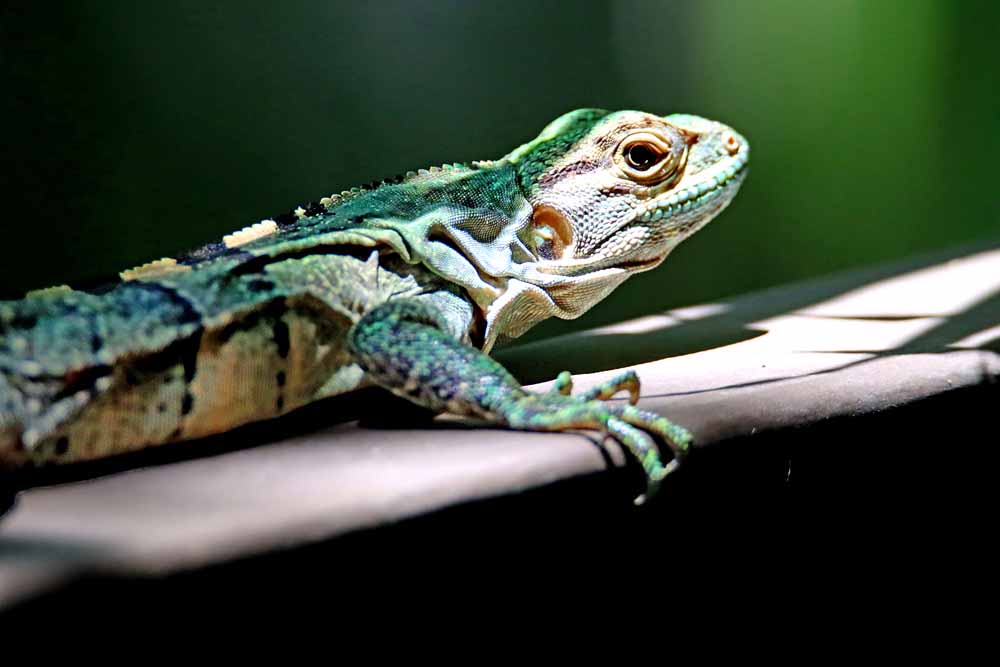I have seen this one 4 times within the last year only in my garden. See all the different views and looks in my Tropical Checkered-Skipper GALLERY.
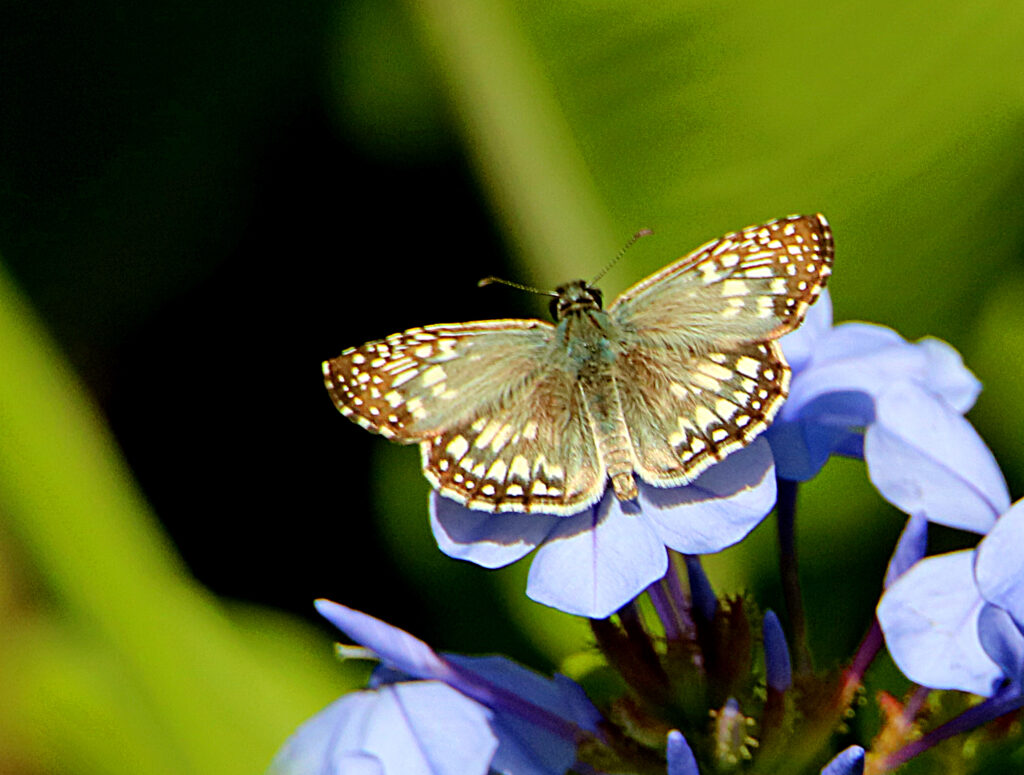
¡Pura Vida!
I have seen this one 4 times within the last year only in my garden. See all the different views and looks in my Tropical Checkered-Skipper GALLERY.

¡Pura Vida!
In fact, I have a whole GALLERY of Unidentified Skippers. And hopefully I will eventually get all of them identified, but until then, it is a large category of my photos! 🙂 Just one photo of this one today!
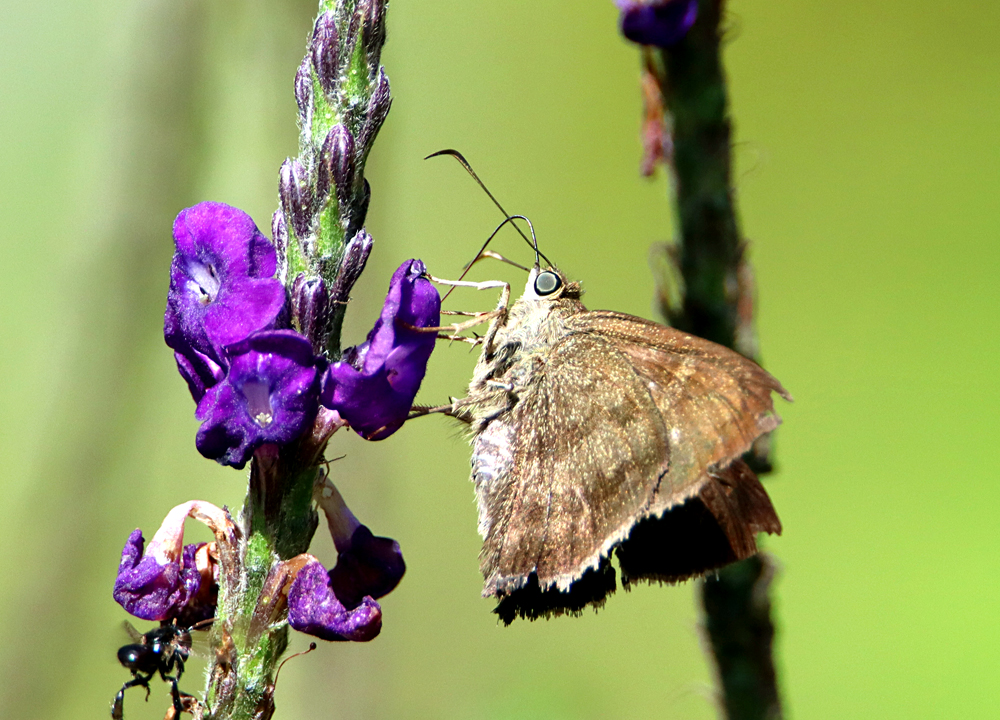
¡Pura Vida!
And Tico Times online has Good News for both the U.S. & Costa Rica with this article yesterday: Intel Investing $1.2 Billion in Costa Rica which means there will be an increase in the 3,000 employees and over 5,000 contractors already working on the research & development plus manufacturing of semiconductors here! And a lot better product than what the U.S. gets from China! 🙂 Costa Rica continues to be the technology hub of Central America and for much of all the Americas. ¡Pura vida!
In the Glassberg book, this matches what Jeffrey Glassberg calls the Bright Scintillant, a Calephelis Species, but my butterfly websites don’t list it as an official species, so I continue to list it in the next closest match, Rounded Metalmark, Calephelis perditalis, though I think it should be listed as a separate subspecies. Most of the characteristics of these two are the same with the Bright Scintillant obviously being brighter and also the border fringe is brown and white checkered, while the Rounded is one solid color. But I’m not in charge of naming butterflies, so I label them the best I can with what information I do have. 🙂 Here’s four shots of one recently in my garden and be aware that he is tiny, only a little larger than my thumbnail . . .
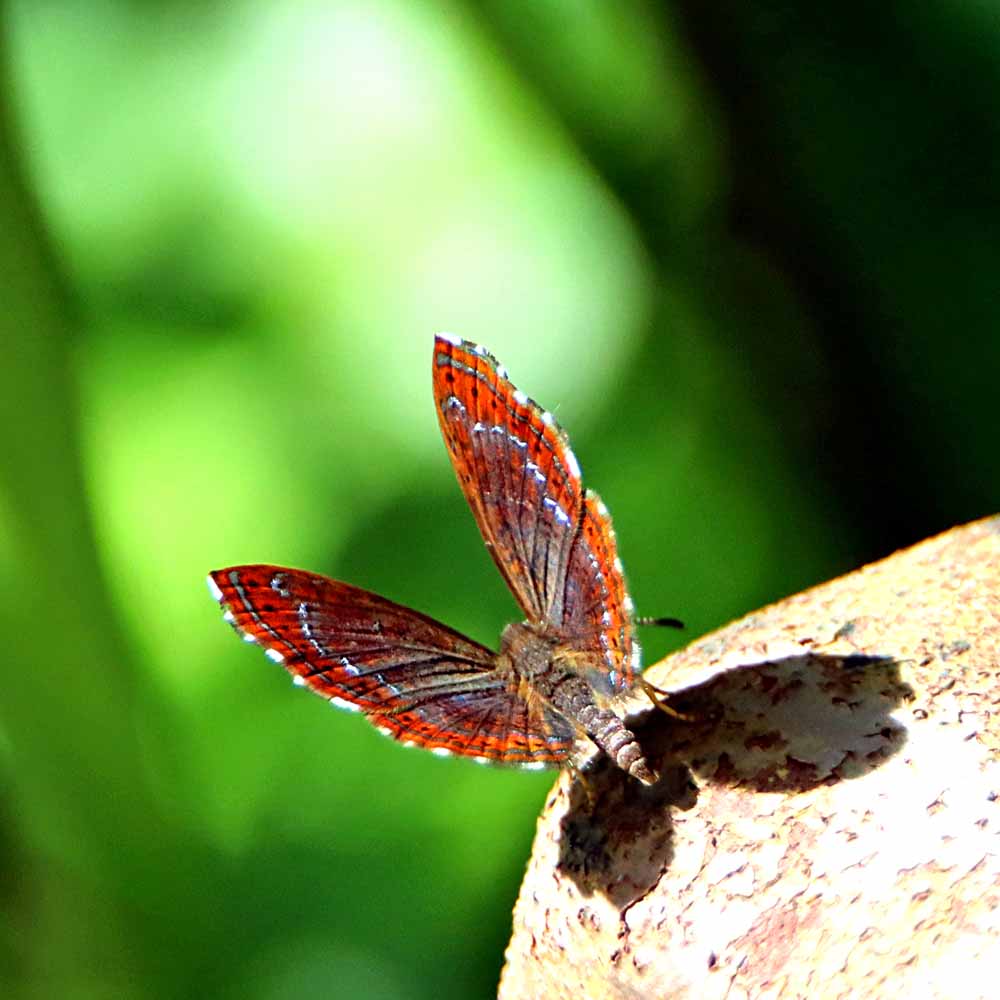
That’s not a carnival ride or some crazy new dance, but the common name for a Skipper Butterfly with the scientific name of Polites vibex, Whirlabout. And I know you probably think these two photos are of different butterflies, and though they are of different individuals of different sizes, they are the same species, with the folded wings the lighter color and the open wings orange and dark brown for males and all-brown for females. The other times I have photographed one in my garden, he looks a little darker or brighter orange than these, as you can see in my Whirlabout Gallery, but I’m fairly confident of my ID each time. There is no end to new discoveries with butterflies! 🙂
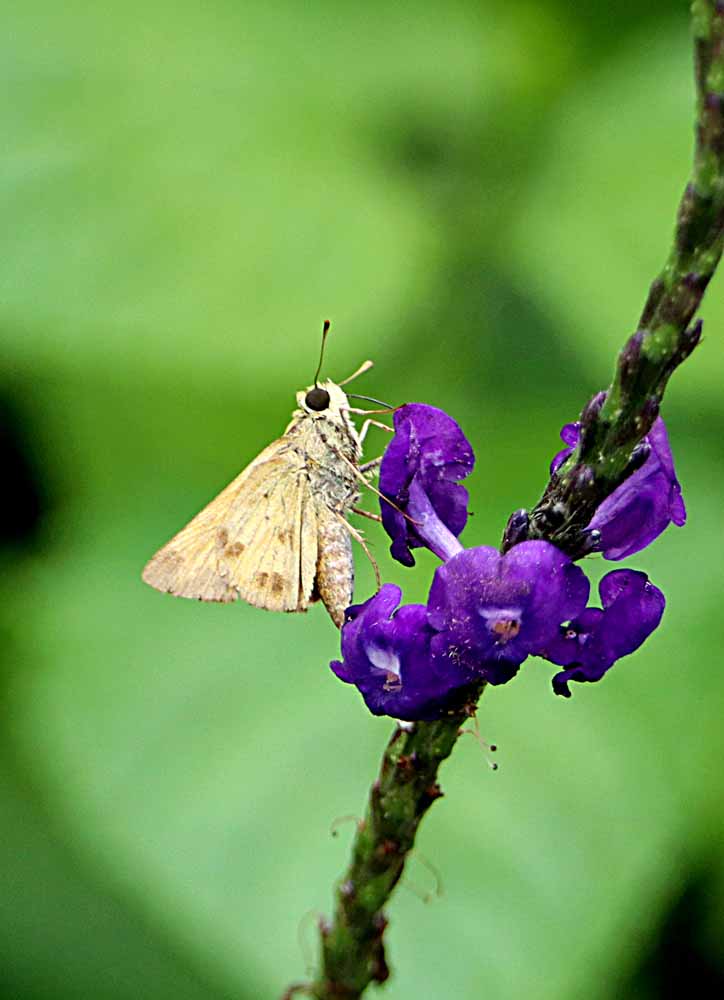
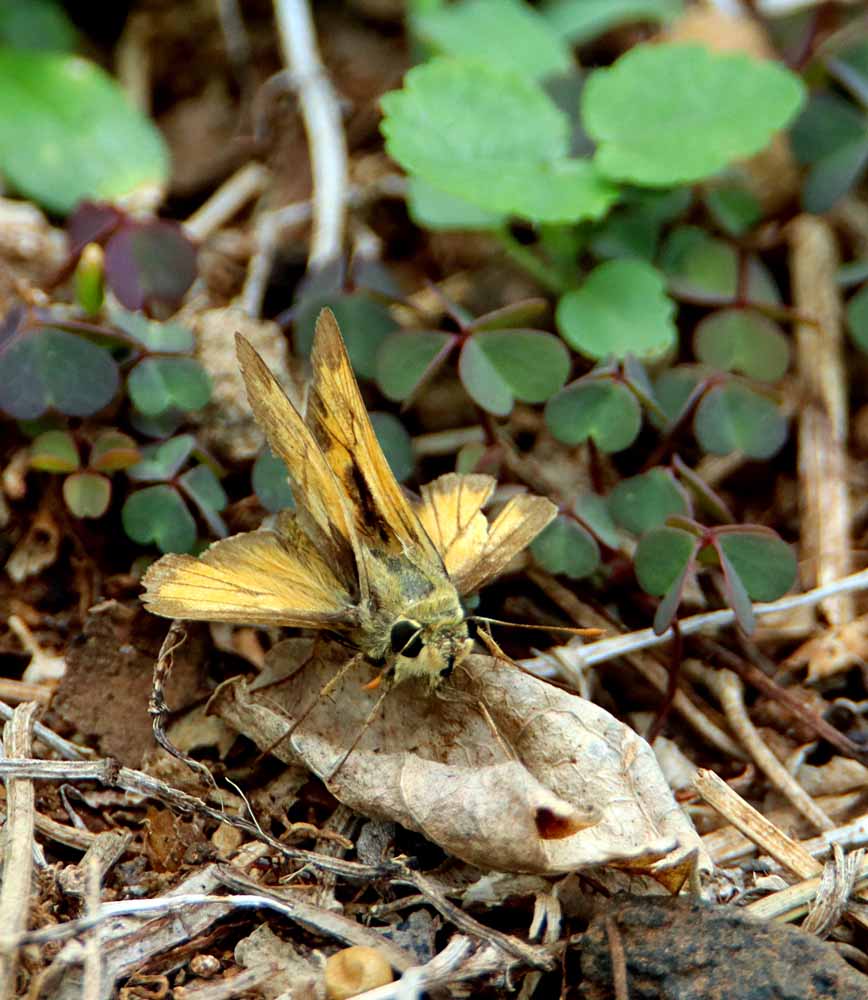
¡Pura Vida!
Yes, I too think it is probably one of the thousands of brown Skippers, but all the books and websites making ID dependent on the wing patterns with top and side views, this “in your face” photo does not help me to identify him! But I still thought it an interesting photo worth sharing! 🙂
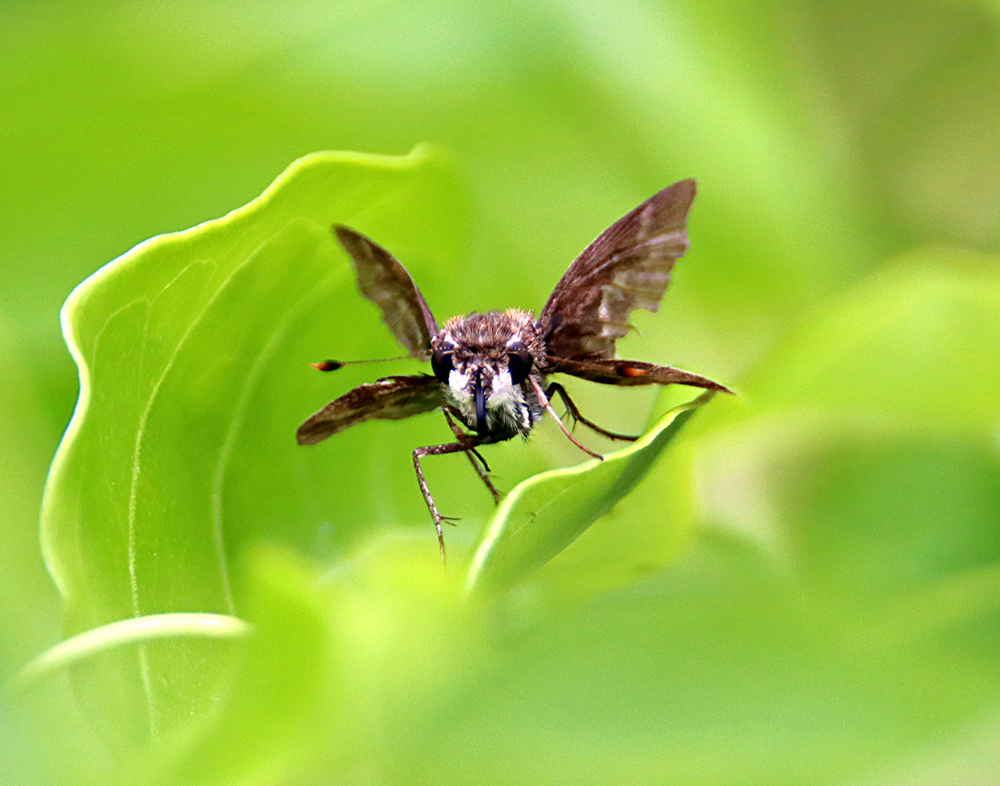
Depending on what you think it is, check out what else is in my Costa Rica Galleries on:
¡Pura Vida!
These two different insects I managed to photograph in flight the other morning are probably two of the approximately 700 species of bees found here in Costa Rica, but I cannot specifically identify them. One has a black body and one a orange body. 🙂
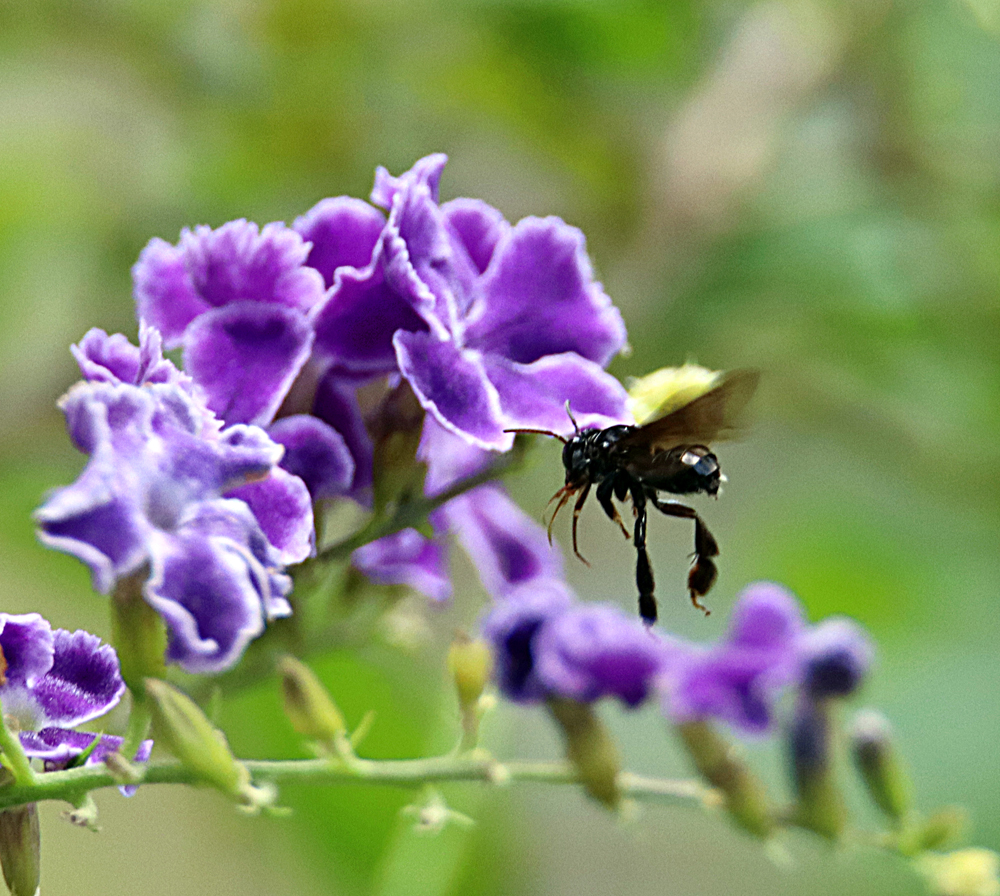
I decided to just go ahead and show all 7 of these from one morning’s brief garden walk, since I’m still staying 2 weeks or more ahead on my blog posts! 🙂 And I may eventually get those last 3 identified, but for now I’ll safely say they are Skippers! 🙂
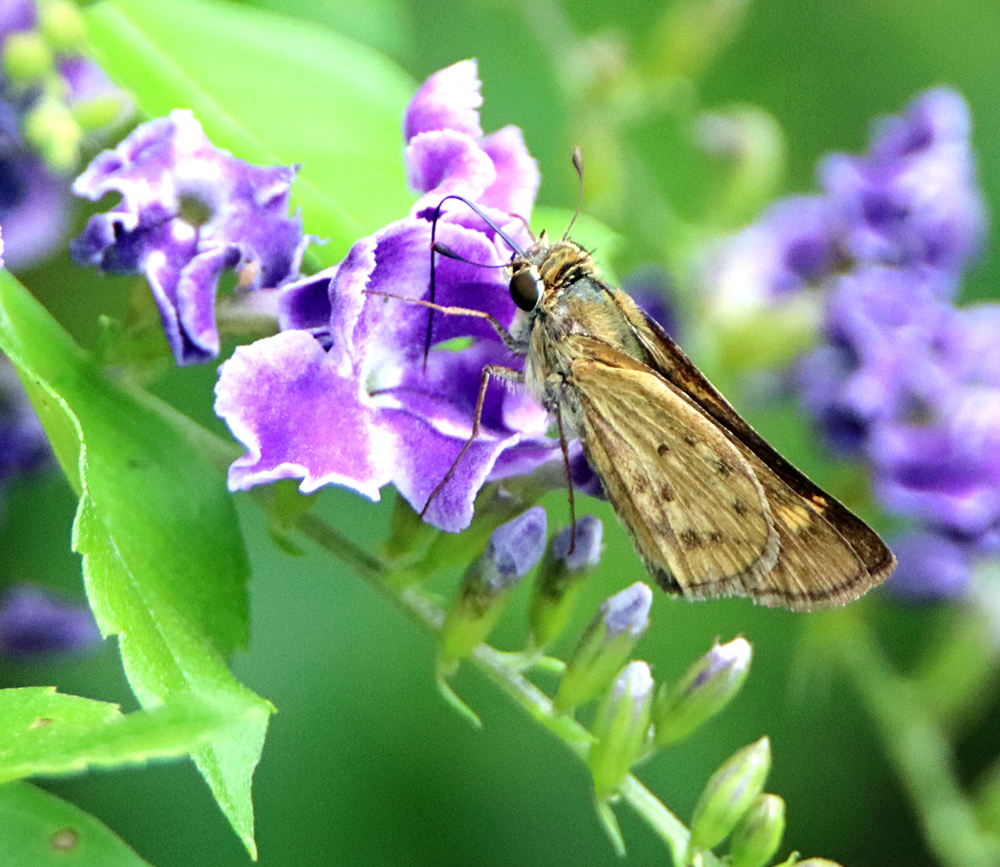
This Pompeius Skipper or Pompeius pompeius scientific name is a new butterfly sighting for me! I continue to be amazed that during this El Niño Year of radical climate change when I’ve been seeing fewer birds and butterflies that I am still seeing new species for me! It is fun! 🙂 And it demonstrates the huge number of species here in Costa Rica! 🙂
My two photos below show one to be lighter in color than the other but both the books and the websites indicate such variations plus different light does that in photos of anything. Plus these are different individuals at different times on different flowers! 🙂
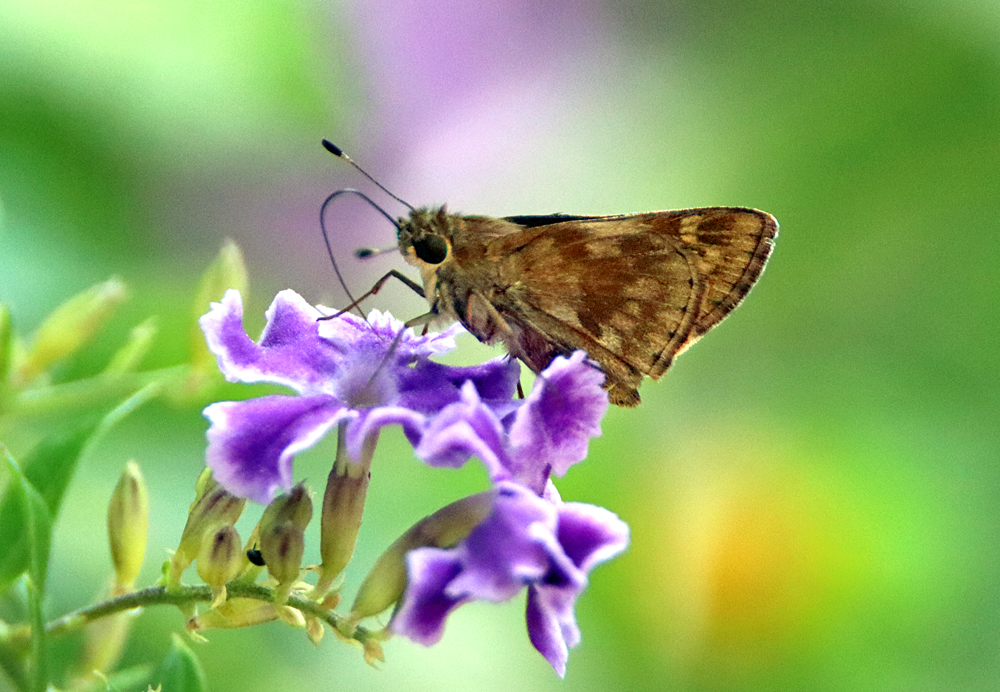
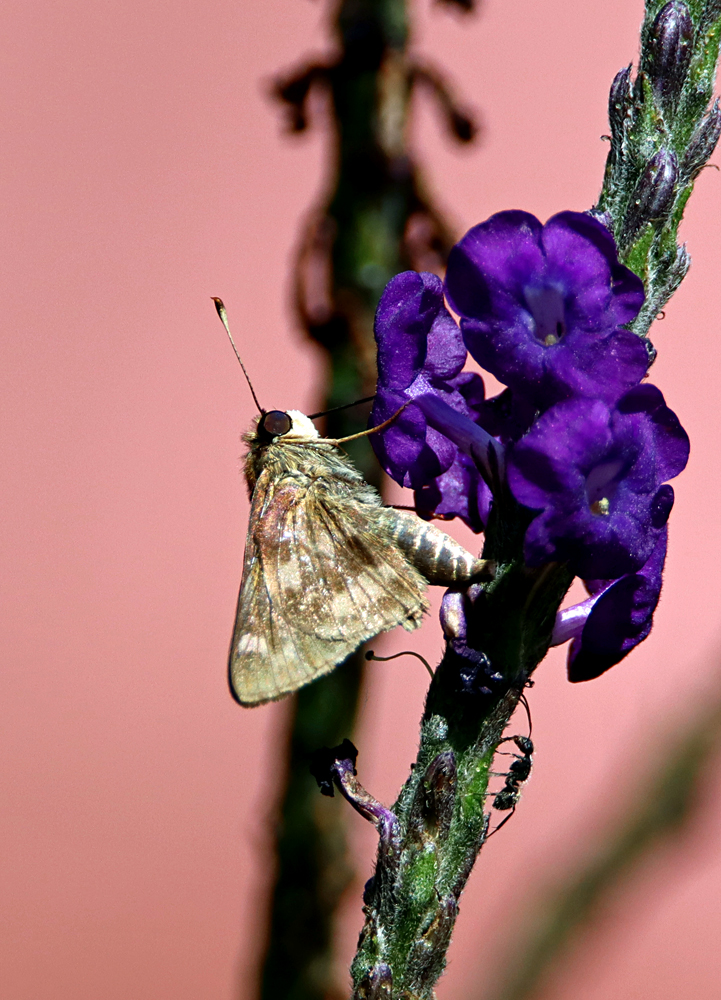
¡Pura Vida!
At one time in the past this was my most numerous butterfly, but not this year! So I was glad to see one in my garden the other day! Here’s three photos I made . . .
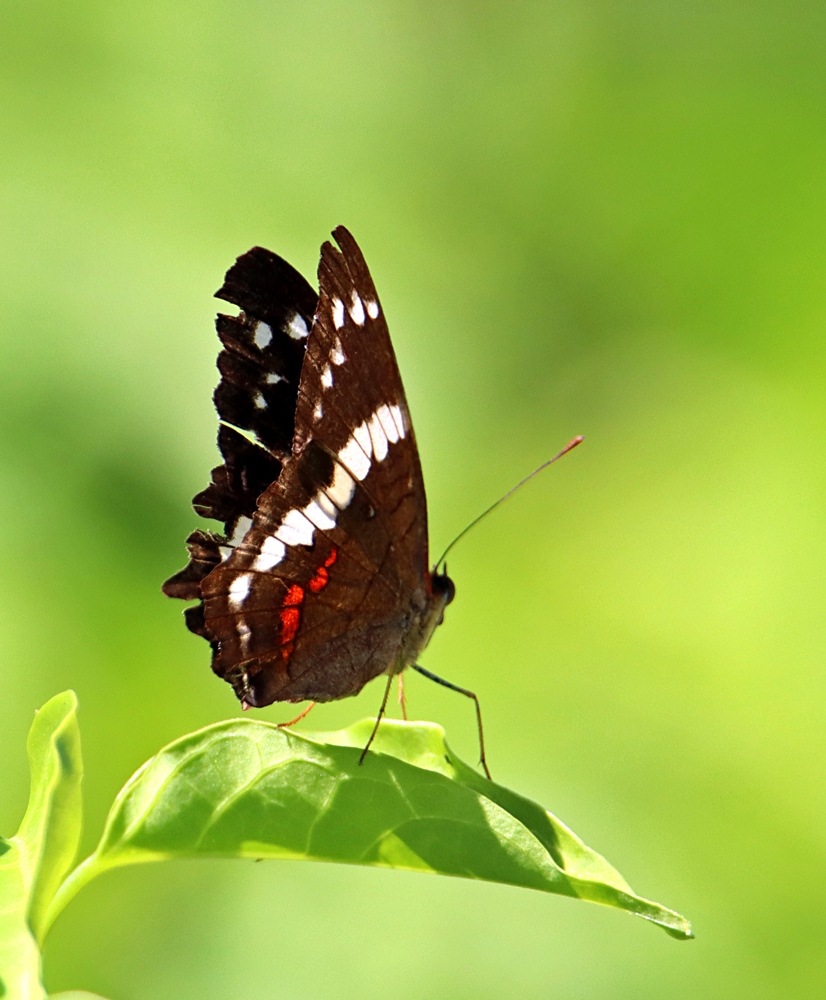
The iguanas are multiplying around my place! 🙂 This first one I snapped on the railing of my terrace which is only 5 cm or 2 inches wide and he used about half that width, to give you an idea of size. Small! Two shots, one from distance and one zoomed in. And then a couple of days later I photographed one on the asphalt driveway that is even smaller and greener. They are born green. Here’s two shots on the railing and then two of the smaller one on the driveway, both with full-body shots and close-ups of the face and upper body.
